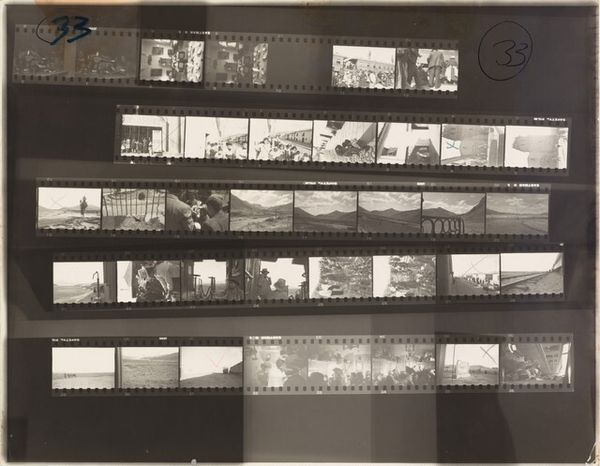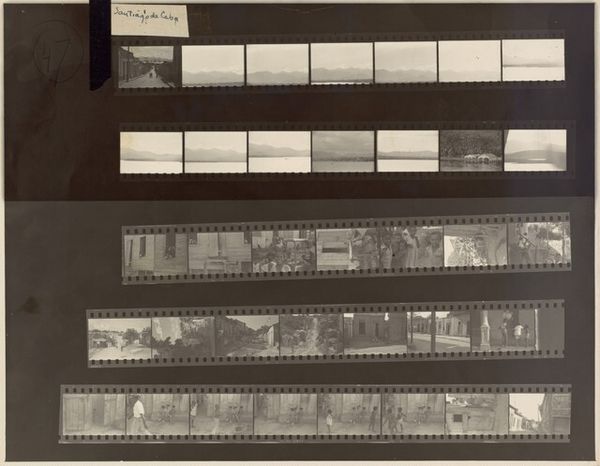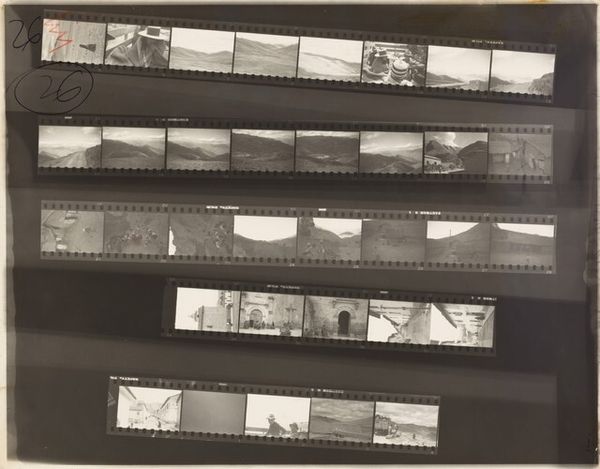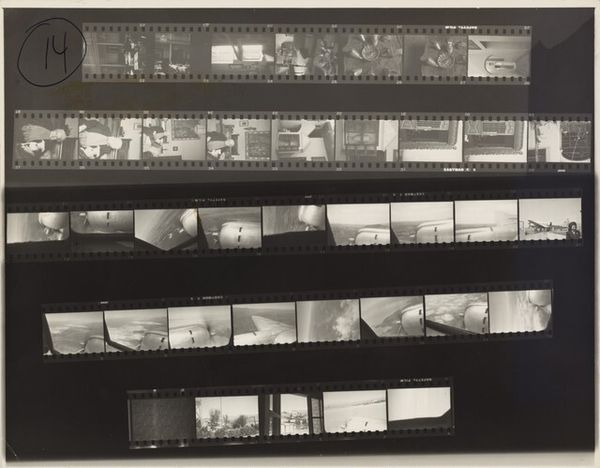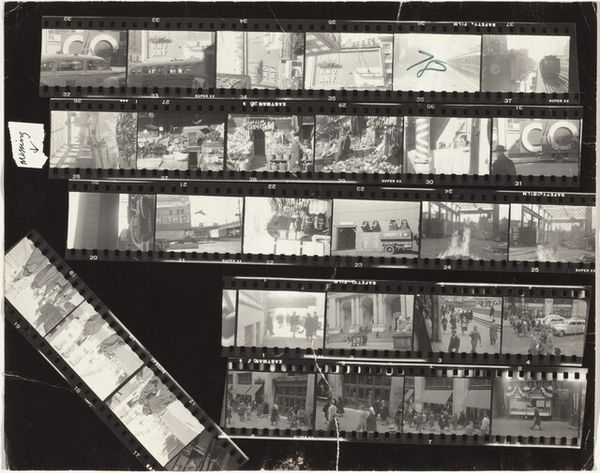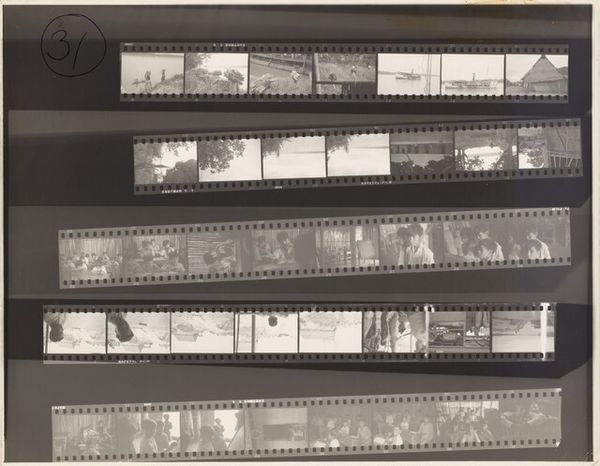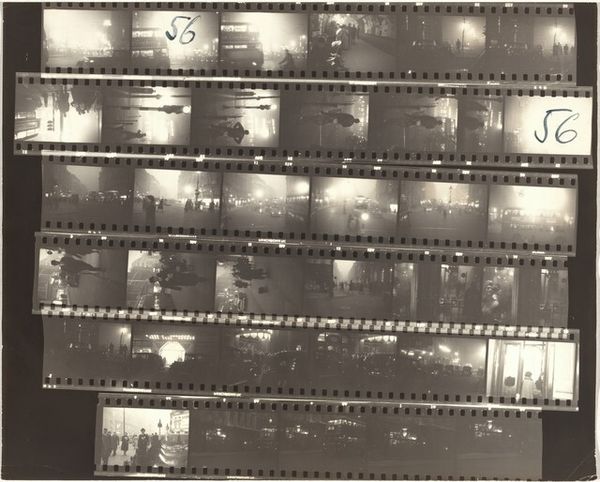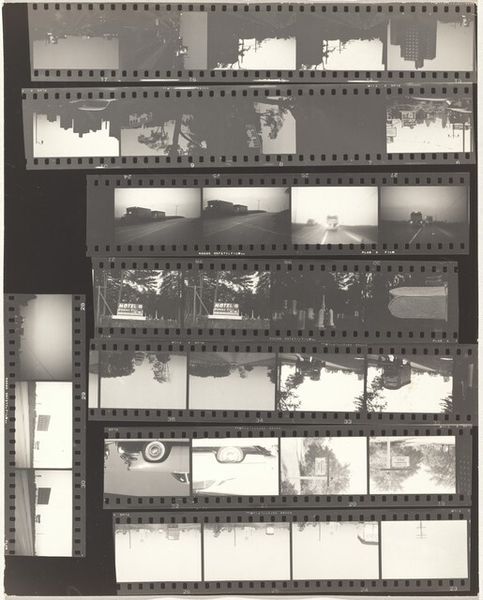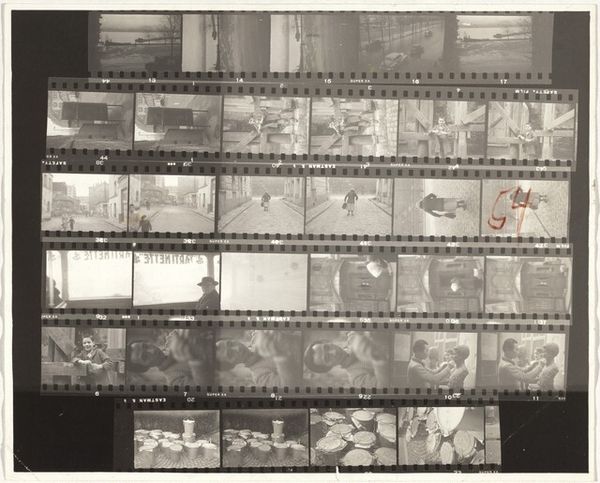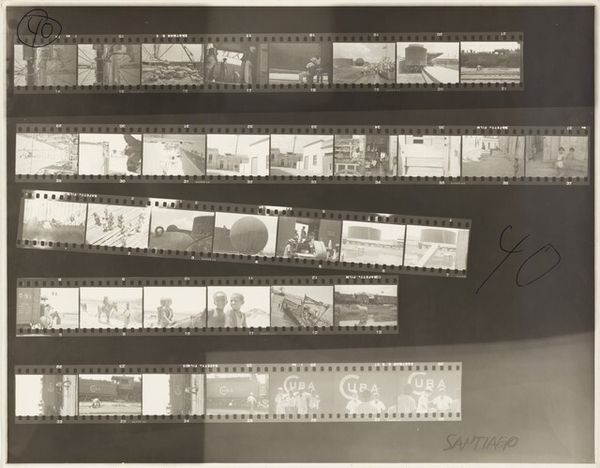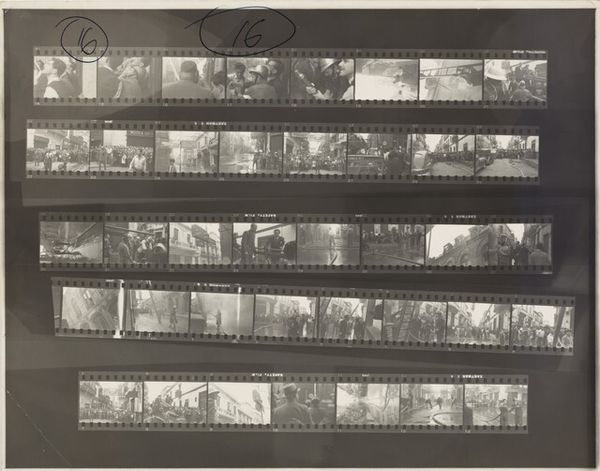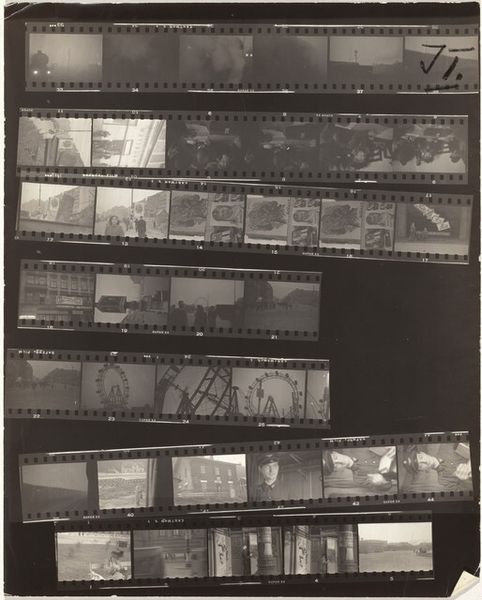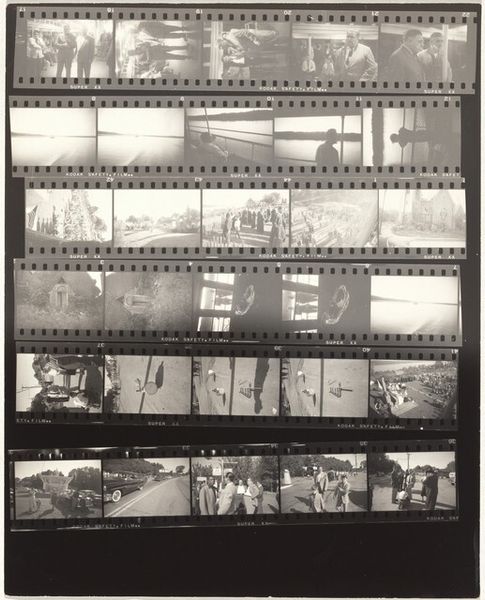
print, photography, gelatin-silver-print
#
print photography
# print
#
street-photography
#
photography
#
gelatin-silver-print
#
realism
Dimensions: sheet: 27.8 x 35.4 cm (10 15/16 x 13 15/16 in.)
Copyright: National Gallery of Art: CC0 1.0
Editor: So, this is "Peru 30," a gelatin silver print by Robert Frank from 1948. It seems to depict various scenes, almost like a collection of film strips. There's a really interesting candid feel to them, as though we’re getting glimpses into real life. What catches your eye about this piece? Curator: What immediately strikes me is the context in which Frank was working. Post-war, there was a strong push for a more objective and “truthful” depiction of the world, moving away from staged photography. This collection of film strips really encapsulates that. Consider how Frank chose to present the raw, unedited versions of these shots. Editor: That makes sense. It's less about a perfect image and more about capturing a moment, right? But what does it mean in relation to Peru? Curator: Exactly! And that's where the politics of imagery come in. Peru, in 1948, was a society undergoing rapid change and social stratification. Frank, being an outsider, a tourist, chooses to point his camera here. He presents his gaze as somewhat neutral through the look of realism, documenting daily lives, capturing different landscapes. What do you think Frank may want the Western viewer to understand with images like these? Editor: Well, seeing all these snippets of everyday life, it definitely gives you a broader view. Perhaps a challenge to common misconceptions about Peru at the time? It moves past single-image narratives to a more collective and nuanced perception. Curator: Precisely. It is worth investigating how he positions his subjects politically. In this piece, the “everyday” quality suggests how images influence our perception of others. He makes it look like he documents reality objectively, which invites a critical question for us as to whether one’s individual perspectives on life will inadvertently promote the existing social order. Editor: I hadn't thought about that aspect, but you're right; it's not just about recording, but about how we interpret those records, which is influenced by cultural institutions. This definitely changes how I see street photography and documentary art now. Curator: I'm glad to help, especially if you now have a wider perspective!
Comments
No comments
Be the first to comment and join the conversation on the ultimate creative platform.
